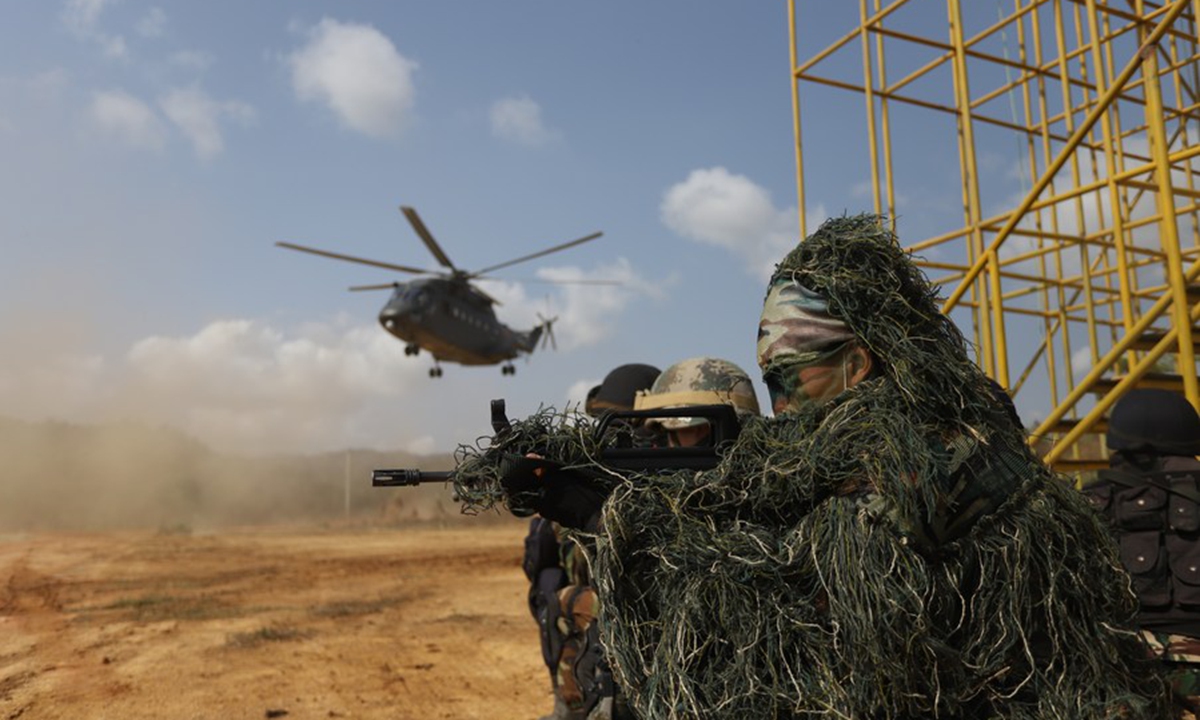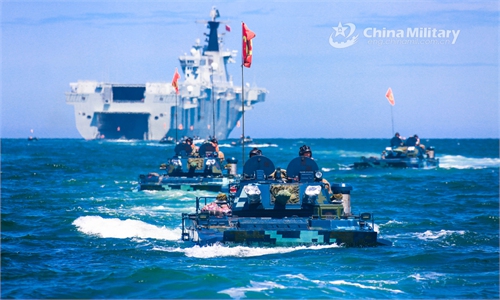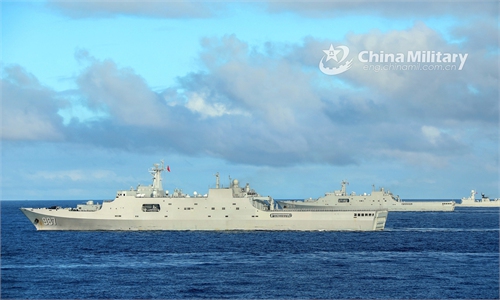Peacefully intended China-Cambodia joint exercise unlike US-led confrontational drills in Asia-Pacific: experts

Soldiers take part in the "Dragon Gold 2020" joint drill in Cambodia's southwestern Kampot province, March 26, 2020. Photo: Xinhua
The Golden Dragon-2023 joint military exercise between China and Cambodia is scheduled to start on Monday in a training ground in Cambodia, with the focus on non-traditional security threats including terrorism, infectious diseases and natural disasters.
Amid foreign media reports claiming Cambodia's deepening ties with China have "raised concerns" in the US and neighbors in the region, experts said that the peacefully intended drill is unlike US-led joint exercises in the Asia-Pacific region that emphasize confrontation.
After arriving in Sihanoukville, Cambodia on Sunday on the Type 071 comprehensive landing ship Jinggangshan, Chinese troops participating in the Golden Dragon-2023 joint exercise rapidly unloaded their equipment and vehicles from the ship under the assistance of local Chinese companies, China Central Television (CCTV) reported on Monday.
The Chinese troops will mobilize to the exercise region on vehicles and launch the exercise on Monday, according to an exercise plan announced by the Chinese People's Liberation Army (PLA) Southern Theater Command in a press release.
Comprising three major parts - joint exercise on security for important events, humanitarian aid and cultural exchange - the exercise will focus on practicing for the manage and control of key target regions, the prevention and control of an unidentified infectious disease, the search and disposal of suspected explosives as well as the handling of slow, low and small flying objects.
A number of Southeast Asian countries have sent military officers to the exercise as observers, according to the press release.
The exercise, which will see over 3,000 personnel take part and is scheduled to last until April 8, marks the fifth China-Cambodia regular joint exercise since 2016, and is expected to enhance the two militaries' anti-terrorism and humanitarian aid capabilities.
Shortly before the Jinggangshan's arrival, the PLA Navy ship for the first time conducted a joint maritime exercise with the Royal Cambodian Navy on Sunday.
Some foreign media claimed that the China-Cambodia military cooperation has led to concerns among other countries, with Al Jazeera saying in a Monday report that Phnom Penh's close relationship with Beijing has sometimes proved to be a source of friction in Cambodia's relationship with other members of ASEAN due to the South China Sea issue.
In response, Chen Xiangmiao, director of the World Navy Research Center at the National Institute for South China Sea Studies, told the Global Times on Monday that the China-Cambodia joint exercise is a regularly arranged one that focuses on anti-terrorism, cross-border crime as well as medical aid and rescue, none of which is sensitive.
By comparison, US-led joint drills, including the Balikatan exercise with the Philippines and those with other countries in the Asia-Pacific region, are large-scale and feature main battle elements including surface combatants, submarines and warplanes, Chen said. Those US-led exercises are aimed at waging war, while the China-Cambodia joint exercise focuses on exchange and cooperation in non-traditional security fields, he said.
The public should understand that the real trouble maker stirring up confrontation in the region is the US, while China is looking to cooperate and contribute to peace and stability, observers said.




